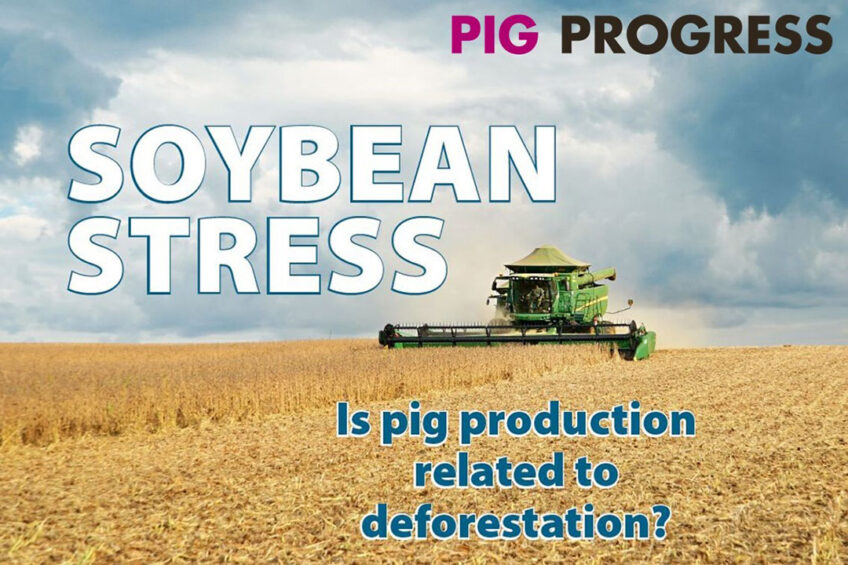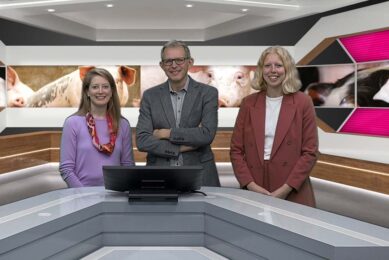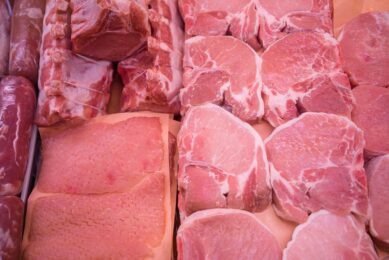Soybeans, sustainability and stress in Pig Progress 9

The 9th edition of Pig Progress for 2021 is now available online. This edition highlights the state of soybeans and its relevance to the swine sector. The role of genetics in a pig’s susceptibility to ASF is considered, and the theme of sustainability was highlighted at the recent AgriVision event.
View Pig Progress digital magazine
The state of soybeans: 2021 and beyond
Soybeans are used widely in pig and other livestock feed rations worldwide. However, this crop, which is grown in about 100 countries, is gaining increasing attention due to sustainability concerns. What does this have to do with the swine industry? This article by correspondent Treena Hein on pages 6-9 explores the details.

Reducing antibiotics with isoquinoline alkaloids
Isoquinoline alkaloids (IQs) are plant-based compounds that could form part of nutritional strategy to reduce the use of antimicrobials in pigs. Having demonstrated anti-inflammatory effects in the gut, studies show that IQs improve nutrient digestibility and intestinal integrity in pigs. Read more in the article by Dr Valeria Artuso-Ponte on pages 10-11.

Column: Feed structure in swine diets
In this column on page 13, animal nutritionist, Dr Francesc Molist, discusses the optimum feed particle size in swine diets with a consideration of processing costs, feed stability, nutritional efficiency, and any undesired side effects.
Interview with Canadian swine veterinarian, Dr Egan Brockhoff
Dr Brockhoff has done impressive work to improve Canada’s pork sector and he plays an important role in preventing foreign swine diseases from entering North America. In this interview with correspondent Treena Hein on pages 14-16, he talks about his involvement in fighting Canada’s PED outbreak and shares his concerns with the detection of ASF in the Dominican Republic and Haiti.

Keeping an open mind to help Korea grow
At his modern pig farm in South Korea, swine producer, Jung-dae Lee (35), achieves 27.4 piglets weaned/sow/year. Although faced with many challenges in the swine industry, Jung-dae Lee likes sharing best practices with his peers and has some encouraging and valuable advice. Read more on pages 20-22.

Controlling oxidative stress in pigs
Oxidative stress is a major issue in pig farming. Studies reveal that a blend of natural antioxidants help to neutralise free radicals and assist in alleviating oxidative stress thereby decreasing the pig’s body maintenance requirement. Read the details in this article by Steven Beckers on pages 24-25.

AgriVision 2021: Focus on sustainability
Will be possible to sustainably feed 10 billion people by 2050? This question was put forward to a global audience at the start of AgriVision, which took place online on 7 October 2021. Thoughts around making agricultural production more sustainable were discussed in detail. This article on pages 26-27 covers the biennial event.

Disease resistance: Host genetics can impact ASFv
RELA, which is the gene associated with resistance to ASFv infection, causes the immune system to overreact when it detects the disease. This can have immediate destructive effects. This article on pages 28-29 by Dr Samaneh Azarpajouh investigates whether genetic modification could be a viable option to establish pig herds with increased resistance to ASFv.

What do pigs say when humans are away?
Installing cameras in barns means pig producers can constantly monitor their animals. But, what do these animals get up to when humans are not in sight, and why is this important? This article buy Serket’s Dileep Sharma on page 30-31 ‘looks through the lens’.

Column: Sow lameness and piglets
Dr Monique Pairis-Garcia has a keen interest in swine welfare, health and pain management. In this column on page 34 she discusses the result of sow lameness on piglets and production.
 Beheer
Beheer








 WP Admin
WP Admin  Bewerk bericht
Bewerk bericht